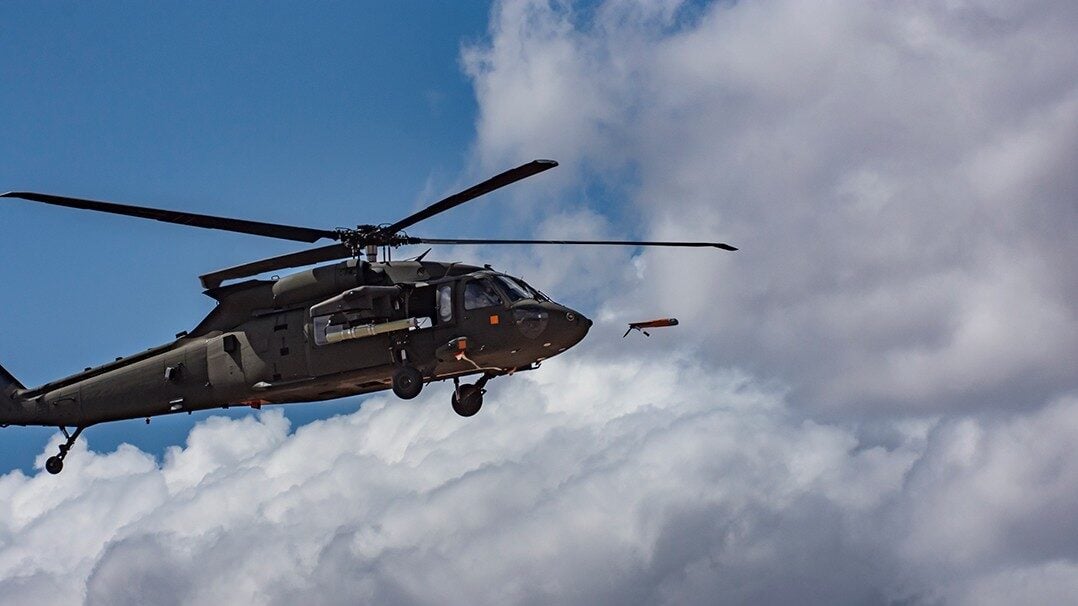
A UH-60 Black Hawk launches an ALTIUS mini-drone (aka a Launched Effects) during a previous event. (US Army)
GLOBAL FORCE 2024 — The US Army is all in on plans to field three different “launched effects” categories, and will use this year’s Experimental Demonstration Gateway Event (EDGE) to zero in on ways new ways to use the weapons, according to service leaders.
“We’re looking at how we take capability that’s right now with industry and apply it to mission sets,” Brig. Gen. Phillip Baker, the director for the service’s Future Vertical Lift cross-functional team, told an audience on Tuesday.
“Let’s focus more on demonstration, let’s look at threat systems … [for] corps, divisions and brigades,” the one-star general added.
Launched effects are essentially small drones that shoot out of something else mid-flight and can be used to collect info or strike targets. Last month the service announced it would throw additional resources behind their development as part of the massive aviation shakeup that freed up $4.5 billion between fiscal 2025-30.
Baker is calling for industry to bring whatever potential launched effects candidates they have to EDGE to help the service gather data on how it can use the new category of weapons to extend the ranges at which it can collect data and strike targets. The service will also use that event to test out swarming options and ways to have one controller operating multiple vehicles at the same time from one device.
Baker and other service leaders at this week’s Association of the US Army’s Global Force symposium in Huntsville, Ala., provided new details about their plans to acquire three different categories of launched effect weapons — the ongoing medium-range option, and new short-range and long-range versions.
The service has been moving out with the medium-range option first, which is a partnership between a handful of companies: Anduril Industries is providing the air vehicle (the Altius 700); Collins Aerospace, the mission system; Aurora Flight Sciences is the integrator; and two others are working on payloads. To cap off a test series with that weapon, the Army will host an operational demonstration later this year and use data to make a fielding decision.
In the meantime the service is pursuing shorter- and longer-range options.
Next week, for example, it will ask industry to submit white papers for possible short-range candidates, according to Col. Danielle Medaglia, the program manager for unmanned aerial systems. If the hunt proceeds as planned, the service could make production awards in the second half of FY26, and it won’t be picking just one winner.
“We’re gonna have at least two vendors, minimum,” she said. “This is a wide-open space: We will not be vendor locked, whether it’s the air vehicle, whether it’s a payload, whether it’s a mission system, because …we need to ensure that we can move back and stay ahead of the threat.”
The service is eyeing a similar pathway for a long-range launched effect it plans to use as the corps level. It plans to kick off the hunt for that new weapon in early FY26, with potential production contracts being awarded in early FY27.






















